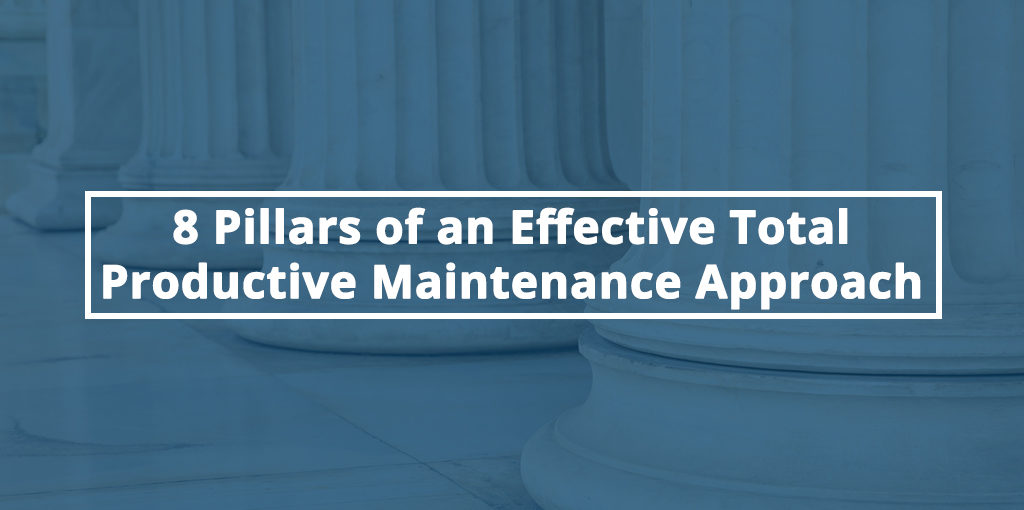Maintenance is the ongoing struggle to keep machines running reliably and efficiently, while offsetting unintended setbacks and downtime. Much of maintenance is preventive and proactive, which means putting in work ahead of time. Smart manufacturers realize this direct example of cause and effect, which forms the support system for a total productive maintenance (TPM) approach.
Building a TPM system
There are eight core pillars of a TPM approach, built on an 5S foundation: Sort, Set in Order, Shine, Standardize, and Sustain. The 5S foundation ensures ordered, repeatable factory operations to yield the best possible results from a TPM approach. With an established 5S base, factory managers can focus on:
1. Autonomous maintenance — Operators are responsible for the care and maintenance of their equipment, putting the onus and ownership on them to ensure equipment is well-lubricated, cleaned, and serviced.
2. Planned maintenance — Routine, schedule maintenance tasks based on predictive or measured failure rates. This reduces the number of unforeseen breakdowns and conserves parts inventories by enabling better ordering controls.
3. Quality maintenance — Techs apply root-cause analysis methods to better understand defects and breakdowns, with new methodologies for maintenance administration developed around data-driven insights.
4. Focused improvement — Groups of employees work together to achieve a better standard of maintenance. Problems are better identified, evaluated, and solved by teams with diverse knowledge and skills.
5. Early equipment management — New equipment is properly set up, calibrated, and cycled into a maintenance plan to reduce the number of setbacks and failures, over both short- and long-term timeframes. Manufacturers design new equipment against known defects.
6. Training and education — Employees engage in ongoing training to gain knowledge about maintenance best practices and stay abreast of new developments. Increased knowledge ensures better operability, quicker problem resolution, and better solutions.
7. Health and safety — Working environments are thoroughly vetted for safety, with proper signage, risk mitigation training, safety equipment, and fail-safe procedures. The goal is an accident-free workplace with minimal liability concerns.
8. Administration — Managers evaluate and improve TPM plans as a “living document,” addressing new sources of waste and expanded administrative functions. TPM supports all facets of operation, with emphasis on lean continuous process improvement.
Each pillar in the TPM approach is a standalone focus, contributing to an overarching plan that ensures better planned production, fewer unplanned disruptions, and a higher overall caliber of maintenance.

Realizing TPM benefits
We’re still worlds away from a zero-downtime factory, but our best shot at realizing this scenario starts with TPM. The efforts involved in an effective TPM approach manifest in several key benefits that drive downtime closer to zero:
- Less unplanned maintenance — Being able to plan ahead for maintenance means mitigating downtime or eliminating it altogether.
- Safer working environment — A safer workplace means fewer liabilities that might force downtime due to injury, accident, or fault.
- Increased quality output — A lower number of defects means fewer maintenance issues requiring correction, leading to better machine reliability.
- Measurability — TPM is measured and quantified via the Overall Equipment Effectiveness (OEE) score. This data drives the TPM mission further.
The measurability of TPM — specifically as it relates to machine reliability — enables manufacturers to hone their maintenance approach in numerous ways. Each adjustment and improvement, combined with its measurable benefit, delivers measurable improvements to production lines and manufacturers’ bottom lines.
